Do you have a question about the Olympus EPOCH 650 and is the answer not in the manual?
Defines the primary application and limitations of the EPOCH 650 ultrasonic flaw detector.
Provides general safety guidelines and warnings for operating the instrument.
Warns about connecting the instrument to the correct power source and using approved cords.
Outlines safety guidelines for handling, charging, storing, and disposing of lithium-ion batteries.
Describes the layout and features of the EPOCH 650 front panel, including different configurations.
Explains how to use the adjustment knob for coarse and fine parameter adjustments.
Describes the use of the navigation pad for parameter adjustments and menu navigation.
Details the function of the direct-access keys for quick parameter selection and function activation.
Lists and describes the various connectors on the EPOCH 650 for input and output signals.
Explains the functionality of the Digital Out connector for alarm outputs, serial communication, and trigger inputs.
Describes the location and protective cover for the USB and microSD card ports.
Describes the primary power source and expected battery life.
Explains how the AC charger/adaptor powers the instrument and charges the battery.
Explains how to select functions and navigate through the software menus using function keys.
Details how to select parameters using parameter keys and identifies the currently selected items.
Describes the feature that automatically adjusts gain to set gated echo amplitude to a specified percentage of screen height.
Introduces access to pulser and receiver settings through dedicated menus.
Details how to adjust system sensitivity (gain) using the dB direct-access key.
Covers main pulser functions, parameters, and live adjustment options.
Covers standard receiver functions and parameters accessible via the Rcvr menu.
Introduces measurement gates and their basic functions for defining measurement regions.
Introduces the process of calibrating the instrument for accurate measurements.
Details the typical procedure for calibrating measurements using known thicknesses.
Outlines the steps required to perform angle beam calibrations.
Describes the onboard data logging system and its capabilities.
Details how direct-access parameters are displayed and selected on the window.
Explains how to adjust system sensitivity (gain) using the dB direct-access key.
Describes the feature for quickly adjusting instrument gain to set gated peak echo to XX% FSH.
Explains establishing system gain as a reference level for inspections requiring gain adjustments.
Covers pulser settings accessible from the Pulser menu item.
Introduces receiver settings accessed from the Rcvr menu.
Enables capturing and storing echo envelopes on the screen for analysis.
Introduces the two independent flaw gates for defining measurement regions.
Explains how to adjust gate start, width, and level using the GATES direct-access key.
Details the four measurement modes (Edge, Peak, 1stPeak, J-Flank) for gated indications.
Explains the gate tracking feature for making echo-to-echo measurements.
Covers various alarm configurations for measurement gates.
Recommends using a basic setup procedure before actual calibration.
Outlines multiple calibration modes to meet transducer, test block, and application requirements.
Provides a sample procedure for calibrating with a straight beam transducer using a test block.
Provides a sample procedure for calibrating with a delay line transducer.
Provides a sample procedure for calibrating with a dual element transducer.
Details calibrating in echo-to-echo mode using a single known thickness.
Provides a procedure for distance calibration using known sound path values with angle beam transducers.
Explains how to identify the Beam Index Point (BIP) for probe/wedge.
Details the importance and procedure for verifying the actual refracted angle of the probe.
Describes the procedure for sound path distance calibration using an ASTM E164 IIW Type I block.
Explains the final step in angle beam calibration to set a reference gain level.
Provides a procedure for distance calibration based on known depth of reflectors.
Discusses activating software options using an activation code provided by Olympus.
Explains Distance Amplitude Correction (DAC) and Time-Corrected Gain (TCG) for graphical compensation.
Details the activation of DAC/TCG features and the importance of reference correction.
Covers standard DAC mode and ASME III mode, including warning curves.
Describes three separate gain adjustment types for DAC/TCG setups.
Permits complete DGS/AVG setups for defect sizing based on calculated curves.
Assists in performing inspections according to AWS D1.1/D1.5 structural welding code for steel.
Details the initial steps to calibrate the instrument for AWS D1.1 inspections.
Explains how to define the reference level for echo evaluation according to AWS requirements.
Assists with inspections for OCTG manufacturers to characterize ID cracking in fabricated pipe.
Details how to activate the API 5UE software option and perform initial setup.
Describes the simplest method for crack depth inspection using API 5UE in Envelope Mode.
Explains the calibration process for API 5UE inspection in Envelope mode.
Details how the EPOCH 650 collects data and calculates crack size using Envelope mode.
Explains how to manually select Amax, T1, and T2 points for crack depth indication.
Allows the live A-scan view to represent an average of successively acquired A-scans to improve signal-to-noise.
Allows applying an independent gain level to the A-scan for monitoring back wall echo.
Introduces the interface gate for immersion applications with changing water path distances.
Explains how to activate the interface gate option.
Provides a simple solution for basic corrosion inspections, optimizing setup and data collection.
Explains how to quickly activate the Corrosion Module and set up the dual transducer.
Allows collecting a single value B-scan representing the side profile of a test material.
Provides a means of making a reference template of a scan for comparison.
Provides step-by-step instructions for replacing the lithium-ion battery.
Provides common symptoms, possible causes, and solutions for instrument issues.
Details pulser, receiver, and calibration specifications.
Defines the primary application and limitations of the EPOCH 650 ultrasonic flaw detector.
Provides general safety guidelines and warnings for operating the instrument.
Warns about connecting the instrument to the correct power source and using approved cords.
Outlines safety guidelines for handling, charging, storing, and disposing of lithium-ion batteries.
Describes the layout and features of the EPOCH 650 front panel, including different configurations.
Explains how to use the adjustment knob for coarse and fine parameter adjustments.
Describes the use of the navigation pad for parameter adjustments and menu navigation.
Details the function of the direct-access keys for quick parameter selection and function activation.
Lists and describes the various connectors on the EPOCH 650 for input and output signals.
Explains the functionality of the Digital Out connector for alarm outputs, serial communication, and trigger inputs.
Describes the location and protective cover for the USB and microSD card ports.
Describes the primary power source and expected battery life.
Explains how the AC charger/adaptor powers the instrument and charges the battery.
Explains how to select functions and navigate through the software menus using function keys.
Details how to select parameters using parameter keys and identifies the currently selected items.
Describes the feature that automatically adjusts gain to set gated echo amplitude to a specified percentage of screen height.
Introduces access to pulser and receiver settings through dedicated menus.
Details how to adjust system sensitivity (gain) using the dB direct-access key.
Covers main pulser functions, parameters, and live adjustment options.
Covers standard receiver functions and parameters accessible via the Rcvr menu.
Introduces measurement gates and their basic functions for defining measurement regions.
Introduces the process of calibrating the instrument for accurate measurements.
Details the typical procedure for calibrating measurements using known thicknesses.
Outlines the steps required to perform angle beam calibrations.
Describes the onboard data logging system and its capabilities.
Details how direct-access parameters are displayed and selected on the window.
Explains how to adjust system sensitivity (gain) using the dB direct-access key.
Describes the feature for quickly adjusting instrument gain to set gated peak echo to XX% FSH.
Explains establishing system gain as a reference level for inspections requiring gain adjustments.
Covers pulser settings accessible from the Pulser menu item.
Introduces receiver settings accessed from the Rcvr menu.
Enables capturing and storing echo envelopes on the screen for analysis.
Introduces the two independent flaw gates for defining measurement regions.
Explains how to adjust gate start, width, and level using the GATES direct-access key.
Details the four measurement modes (Edge, Peak, 1stPeak, J-Flank) for gated indications.
Explains the gate tracking feature for making echo-to-echo measurements.
Covers various alarm configurations for measurement gates.
Recommends using a basic setup procedure before actual calibration.
Outlines multiple calibration modes to meet transducer, test block, and application requirements.
Provides a sample procedure for calibrating with a straight beam transducer using a test block.
Provides a sample procedure for calibrating with a delay line transducer.
Provides a sample procedure for calibrating with a dual element transducer.
Details calibrating in echo-to-echo mode using a single known thickness.
Provides a procedure for distance calibration using known sound path values with angle beam transducers.
Explains how to identify the Beam Index Point (BIP) for probe/wedge.
Details the importance and procedure for verifying the actual refracted angle of the probe.
Describes the procedure for sound path distance calibration using an ASTM E164 IIW Type I block.
Explains the final step in angle beam calibration to set a reference gain level.
Provides a procedure for distance calibration based on known depth of reflectors.
Discusses activating software options using an activation code provided by Olympus.
Explains Distance Amplitude Correction (DAC) and Time-Corrected Gain (TCG) for graphical compensation.
Details the activation of DAC/TCG features and the importance of reference correction.
Covers standard DAC mode and ASME III mode, including warning curves.
Describes three separate gain adjustment types for DAC/TCG setups.
Permits complete DGS/AVG setups for defect sizing based on calculated curves.
Assists in performing inspections according to AWS D1.1/D1.5 structural welding code for steel.
Details the initial steps to calibrate the instrument for AWS D1.1 inspections.
Explains how to define the reference level for echo evaluation according to AWS requirements.
Assists with inspections for OCTG manufacturers to characterize ID cracking in fabricated pipe.
Details how to activate the API 5UE software option and perform initial setup.
Describes the simplest method for crack depth inspection using API 5UE in Envelope Mode.
Explains the calibration process for API 5UE inspection in Envelope mode.
Details how the EPOCH 650 collects data and calculates crack size using Envelope mode.
Explains how to manually select Amax, T1, and T2 points for crack depth indication.
Allows the live A-scan view to represent an average of successively acquired A-scans to improve signal-to-noise.
Allows applying an independent gain level to the A-scan for monitoring back wall echo.
Introduces the interface gate for immersion applications with changing water path distances.
Explains how to activate the interface gate option.
Provides a simple solution for basic corrosion inspections, optimizing setup and data collection.
Explains how to quickly activate the Corrosion Module and set up the dual transducer.
Allows collecting a single value B-scan representing the side profile of a test material.
Provides a means of making a reference template of a scan for comparison.
Provides step-by-step instructions for replacing the lithium-ion battery.
Provides common symptoms, possible causes, and solutions for instrument issues.
Details pulser, receiver, and calibration specifications.
| Pulser | Square wave pulser |
|---|---|
| Display Update Rate | 60 Hz |
| Pulser Voltage | 100 V to 400 V |
| Operating Temperature | -10°C to 50°C (14°F to 122°F) |
| Gain Range | 0 dB to 110 dB |
| Pulse Repetition Frequency | Up to 2 kHz |
| Measurement Rate | Up to 60 measurements per second |
| Gate Start | Variable |
| Gate Width | Variable |
| Battery Type | Rechargeable lithium-ion battery |
| Display | Full VGA (640 x 480 pixels) transflective color LCD |

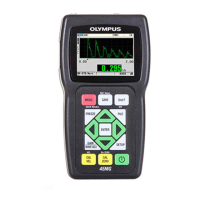

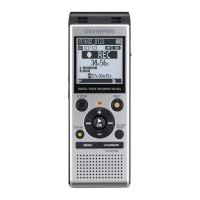
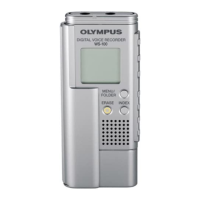



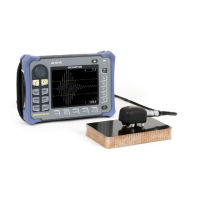

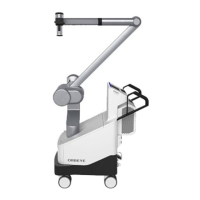
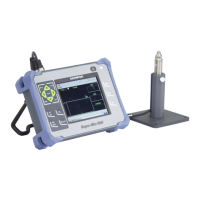
